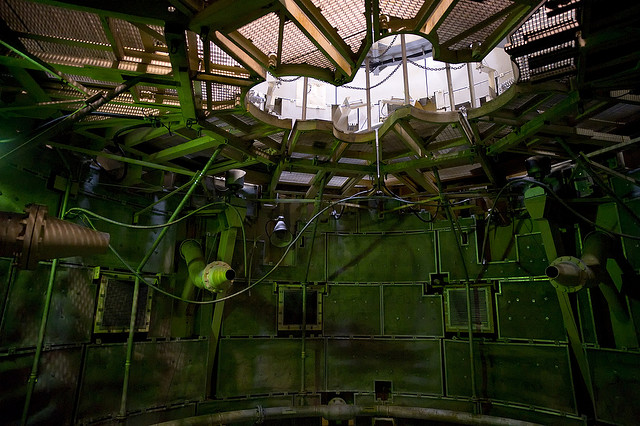With his book Command and Control: Nuclear Weapons, the Damascus Accident, and the Illusion of Safety, Eric Schlosser, who previously wrote Fast Food Nation, has arguably done more to bring nuclear weapons to the forefront of the consciousness of Americans than anyone since President Obama with his 2009 Prague speech, in which he announced his commitment (since misplaced under a White House sofa or somewhere) to a world without nuclear weapons. Still, it was an unexpected surprise to find a piece by Schlosser in the March 12 New Yorker titled Break-in at Y-12 that chronicled the history of the anti-nukes Plowshares movement, as well as profiling Dorothy Day.
Plowshares’ most recent action was the July, 2012 infiltration of the Highly Enriched Uranium Materials Facility in Oak Ridge, Tennessee by Gregory Boertje-Obed, Michael Walli, and Sister Megan Rice. Unfortunately, from the perspective of the government and media, Plowshares wasn’t protesting nuclear weapons, it was conducting a complimentary test of the unit’s security and revealing its gaps. Of course, that didn’t prevent the government from sentencing the trio to federal prison.
At one point Schlosser visits the sites of silos in Colorado that house nuclear warhead-armed ICBMs (intercontinental ballistic missiles). In the process, he continues Plowshare’s tradition of revealing security lapses.
Using a map created by anti-nuclear activists in the late nineteen-eighties, I had little trouble finding Minuteman complexes. They are often visible from public roads. Soon I could spot one without the map: a cluster of poles in the middle of a field, surrounded by chain-link fence. What seemed extraordinary at first—a ballistic-missile complex right off the highway, in the middle of the prairie, just an hour or so east of Greeley, Colorado—soon became routine. At one Minuteman site, I parked my rental car, got out, and walked over to the nearby fence. The padlock on the gate could be cut open in seconds. Beyond it, the site’s perimeter fence didn’t look the slightest bit intimidating, despite a sign that said, “WARNING … Use of Deadly Force Authorized,” in bright-red letters. Within a few minutes, you could remove a section of that fence big enough to drive a van, a backhoe, or a tractor-trailer onto the complex. After 9/11, Remote Visual Assessment Cameras were installed at Minuteman sites. While exploring the outskirts of the launch site, taking pictures, I kept expecting that someone would see me with the surveillance cameras and order me to stop. No one did.
Some might accuse Schlosser of giving terrorists ideas. But any nuclear terrorist worth his or her salt would have figured this out for himself. It’s one thing to be forced to live under a black cloud cloud of looming nuclear fear. But it’s another when those in favor of the program refuse to adequately secure it. Meanwhile, what makes Schlosser’s piece an especially effective case for nuclear abolition is that he doesn’t explicitly proscribe that; instead, he lets the agita-inducing facts speak for themselves. Elsewhere, of course, he has advocated, such as in this Nov. 2014 article for the Guardian.
Even with the best of intentions and a sincere desire to avoid nuclear war, the complexity of weapons systems, the unreliability of communications systems and human fallibility can precipitate disaster.
… In the 21st century a new international consensus is emerging: nuclear weapons are only useful for killing or terrorising civilians. The number of weapons worldwide must be reduced with the goal of some day reaching zero.

